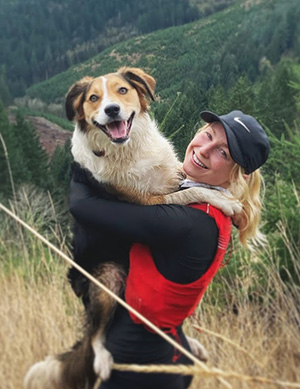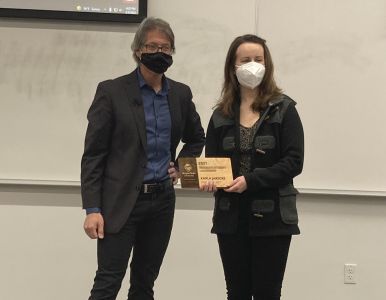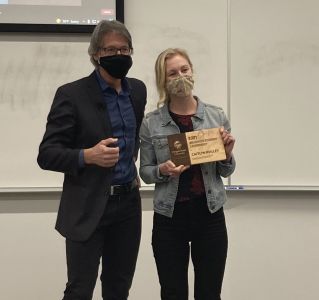The amount of carbon stored in soils is about three times that in living plants and double that in the atmosphere.
But, we often overlook soils’ powerful ability to store carbon.
“Concern about rising atmospheric carbon dioxide concentrations has heightened interest in the role that forests play in carbon sequestration, storage and cycling,” says Jeff Hatten, associate professor of soil science and head of the forest engineering, resources and management department at the Oregon State University College of Forestry. “Living trees sequester and store carbon, but we give less recognition to soils’ role.”
But what happens to the soil’s carbon levels after forest harvests?
According to published research by OSU and Weyerhaeuser Company, conventional timber harvesting has no effect on carbon levels in the mineral soils of the western Pacific Northwest for at least three-and-a-half years after harvest.
Historic in its scope, a collaborative and long-term effort between Hatten and Scott Holub of Weyerhaeuser monitored nine managed Douglas-fir forest stands in Oregon and Washington before and after traditional timber harvest and replanting, analyzing more than 50,000 soil samples from 2700 sample points.
“Our original hypothesis that timber harvesting would decrease soil carbon in the short term was disproven,” Hatten says. “Even where you have the highest soil temperatures and the highest soil moistures – the strongest environment for decomposition that releases carbon dioxide into the atmosphere – harvesting doesn’t seem to have an impact in the areas we studied.”
Across all the sites combined, after harvest, the scientists found little change (+2%) in mineral soil carbon content and a 184% hike in forest floor carbon, the result of harvest residue.

“We should not overlook the importance of the 184% increase in forest floor carbon,” says Katherine McCool, a master’s student in Hatten’s lab who is researching forest soil and watershed processes. “We can expect this increase because the branches, needles and bark that fall to the ground as harvest residue, in addition to the dead roots and stumps from harvested trees, will provide much of the future carbon that will infiltrate into the soil.”
The study, the most extensive sampling ever conducted to determine if harvesting has an impact on soil carbon, is essential because of soil’s ability to store carbon to mitigate and prevent increased greenhouse
gases and maintain a stable carbon balance in the soil for sustainable forest management.
“Soil carbon also is useful in establishing a suitable microbiome for plant and fungal growth,” says McCool. “Without ample soil carbon, new seedlings in post-disturbance areas will not be able to grow.”
Hatten had plans to resample these research sites in coming years and decades to look at the longer-term impacts. Then the 2020 Holiday Farm fire occurred, tearing through some of the research sites near Eugene, Oregon, and dramatically altering the forest landscape. The research continues, but now Hatten and McCool are also studying the role and effect of fire on soil carbon dynamics, examining one of the nine research sites which burned and assessing how soil changes after a severe wildfire in a harvested stand.
“The existence of this preestablished soil carbon site provides an excellent opportunity to study the difference between pre- and post-fire soil carbon, which is often hard to come by due to the spontaneity of wildfire,” says McCool.
Hatten and McCool found a 97% decrease in forest floor carbon within the research site, which equates to 14-times less forest floor carbon than in the pre-harvest stand. The fire’s impact on the mineral soil carbon is still undetermined, but given that 90% of the soil’s carbon lies below the forest floor, the results will have big ramifications for the total carbon budget of the site.
“These initial results show that disturbances like fire can reduce carbon sequestration progress,” says McCool. “Therefore, management activities need to include a focus on fire-safe landscapes if we want to prioritize carbon containment.”
A version of this story appeared in the Spring 2022 issue of Focus on Forestry, the alumni magazine of the Oregon State University College of Forestry.















